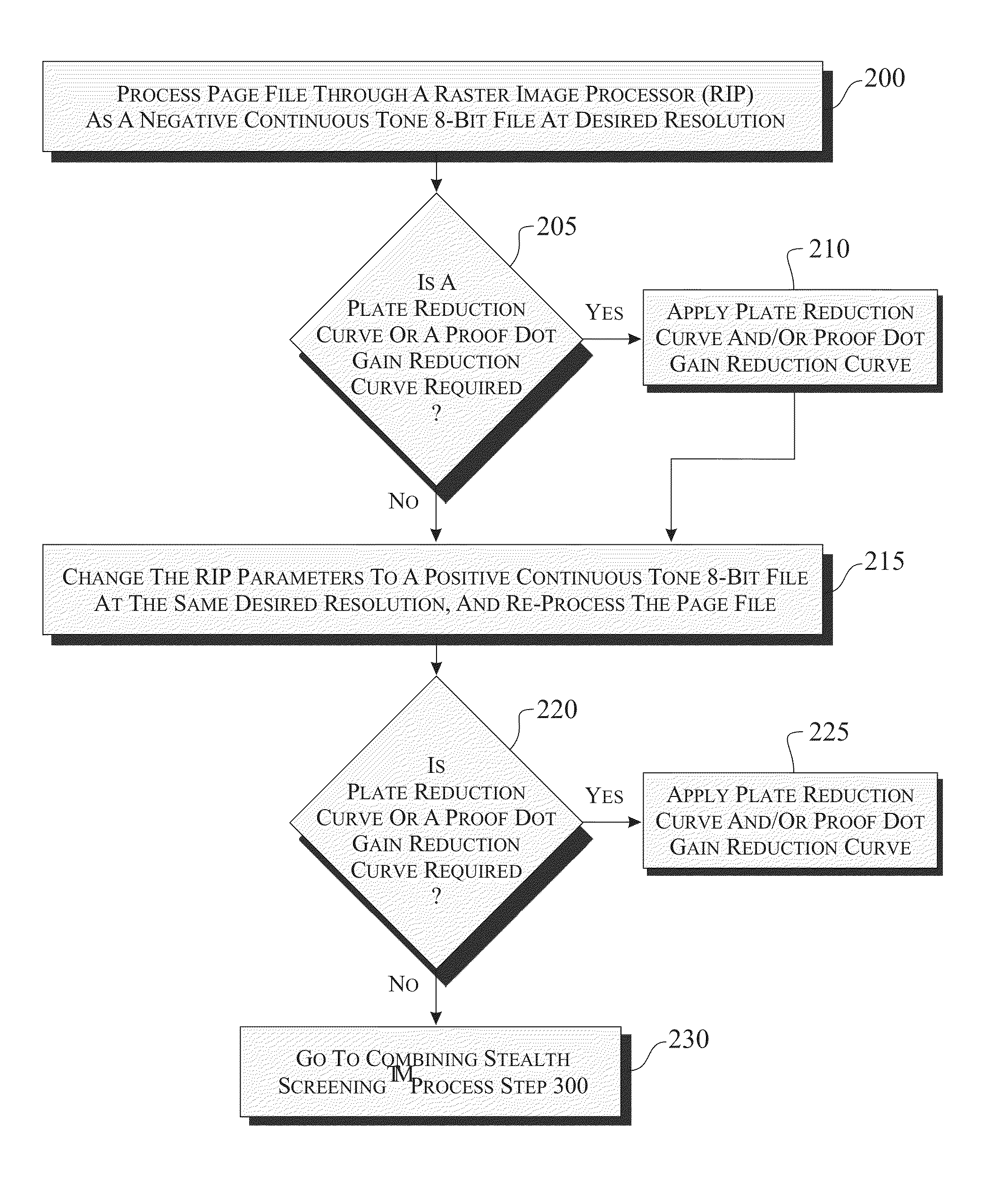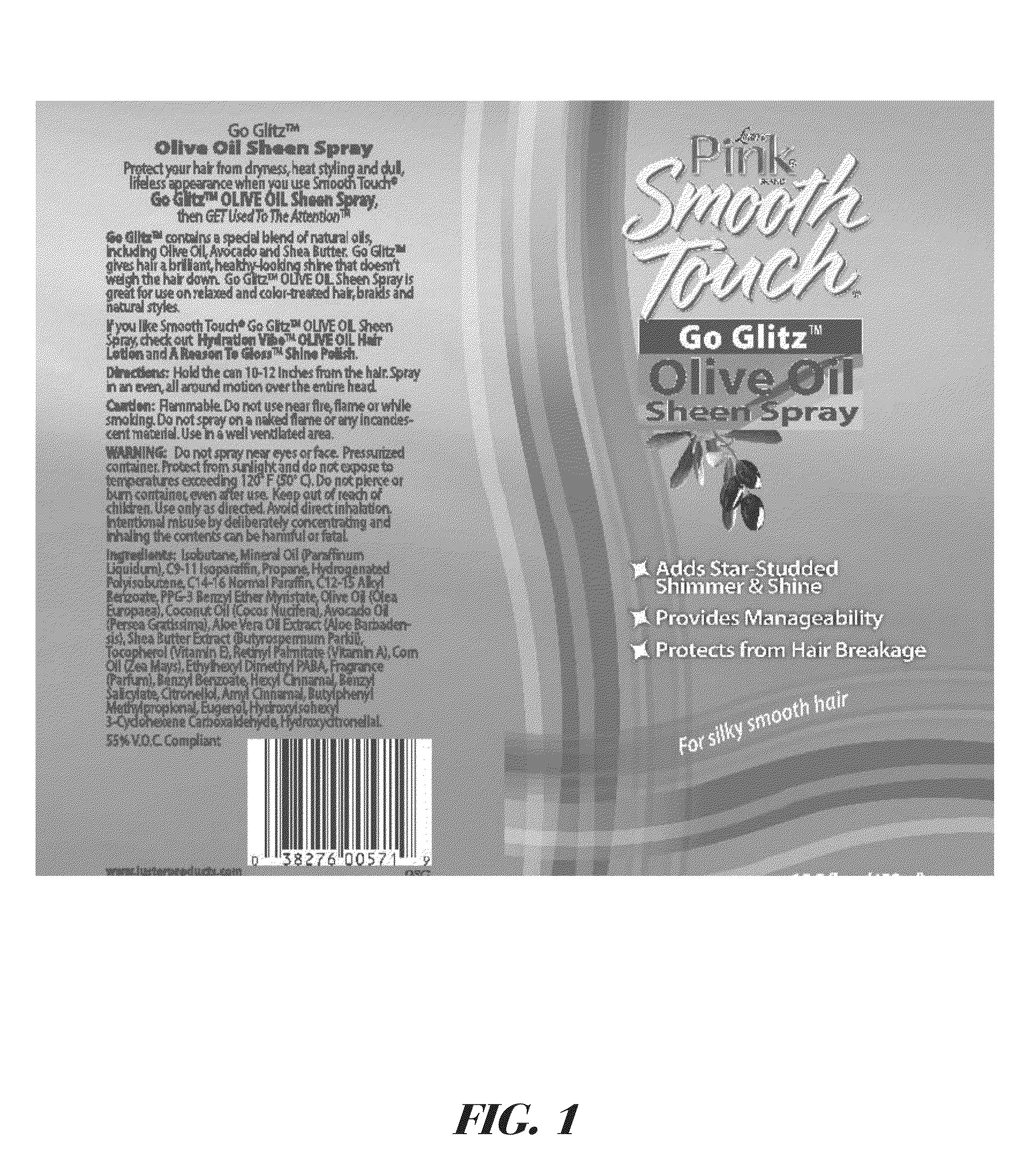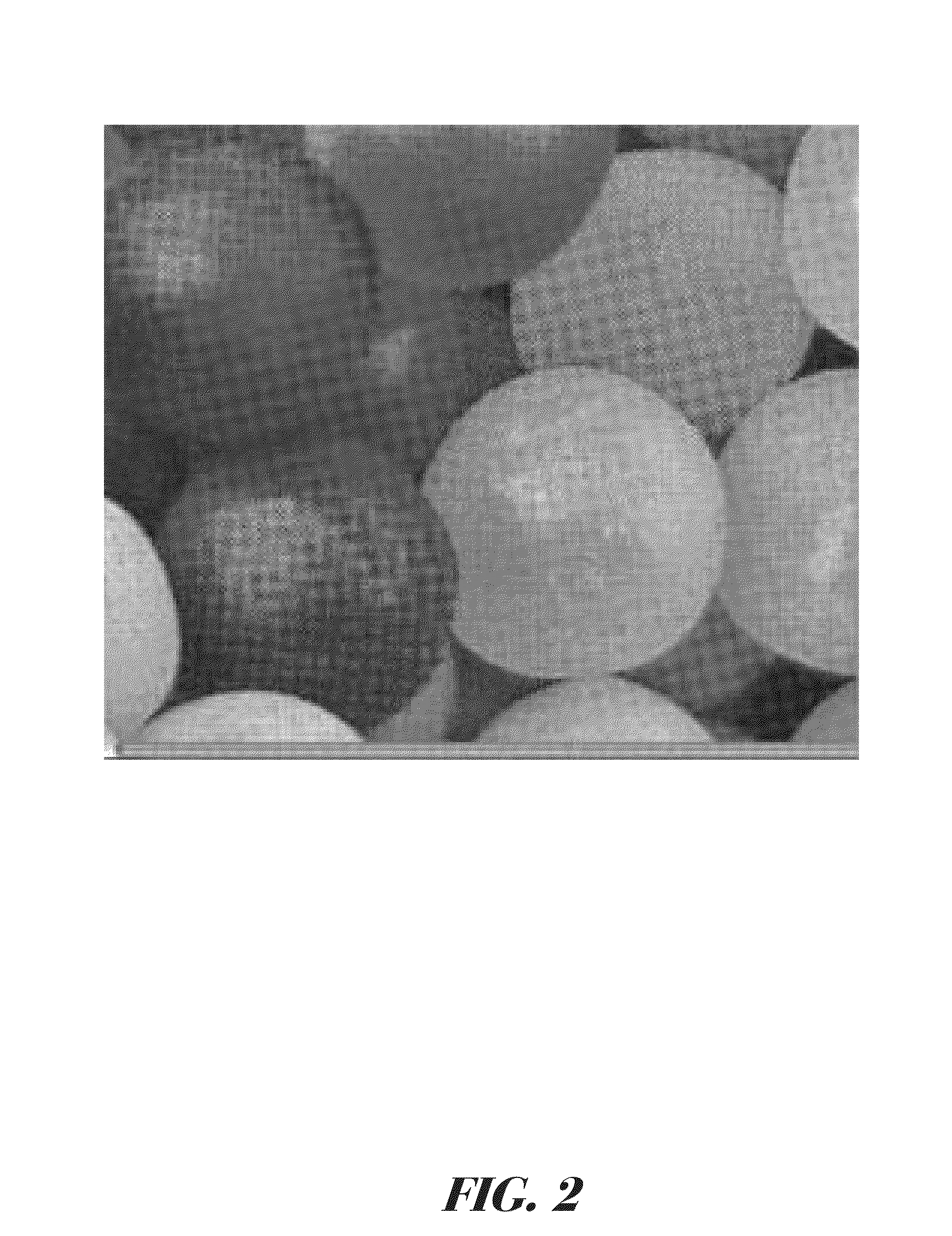Enhanced halftone screening method for the dry offset printing process
a screening method and technology for dry offset printing, applied in the field of dry offset printing, can solve the problems of lack of brilliant bright color, lack of print contrast, ink contamination, etc., and achieve the effects of improving print contrast, color vibrancy, and reducing ink transfer and color contamination
- Summary
- Abstract
- Description
- Claims
- Application Information
AI Technical Summary
Benefits of technology
Problems solved by technology
Method used
Image
Examples
Embodiment Construction
[0078]Shown throughout the Figures, the invention is directed to a novel method of screening, alternately referred to herein as Stealth™ Screening or the Stealth™ process, that redefines the limits of Dry Offset print quality. The unique screening method enables Printers to achieve continuous tone results even when using coarse line screening. The method eliminates wet-trapping of inks and the inherent contaminants, provides more ink to the substrate, resulting in unmatched print contrast; and creates high fidelity color separations using Pantone colors, while achieving photographic quality and offset results. The Pantone Matching System (PMS) is a well known proprietary color space used in the printing industry. While reference is made herein to the Pantone system, it will be apparent to those skilled in the printing art that the method(s) of the present invention are adaptable for use with other color space systems as well.
[0079]Generally, “halftone” is the reproduction of continu...
PUM
 Login to View More
Login to View More Abstract
Description
Claims
Application Information
 Login to View More
Login to View More - R&D
- Intellectual Property
- Life Sciences
- Materials
- Tech Scout
- Unparalleled Data Quality
- Higher Quality Content
- 60% Fewer Hallucinations
Browse by: Latest US Patents, China's latest patents, Technical Efficacy Thesaurus, Application Domain, Technology Topic, Popular Technical Reports.
© 2025 PatSnap. All rights reserved.Legal|Privacy policy|Modern Slavery Act Transparency Statement|Sitemap|About US| Contact US: help@patsnap.com



